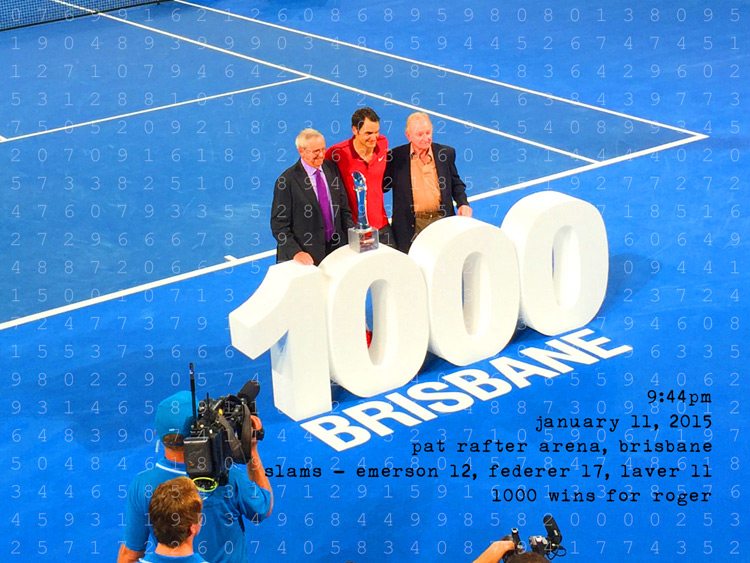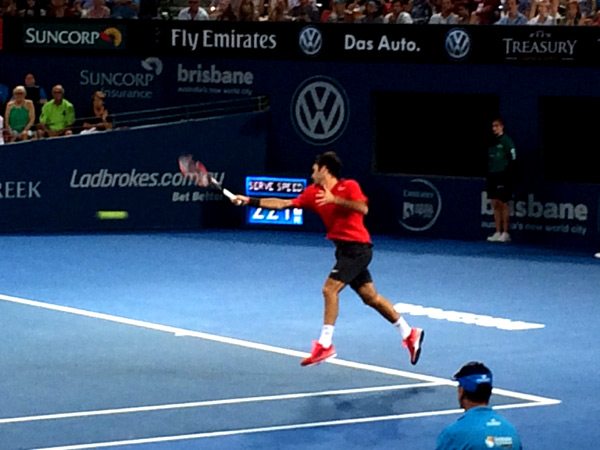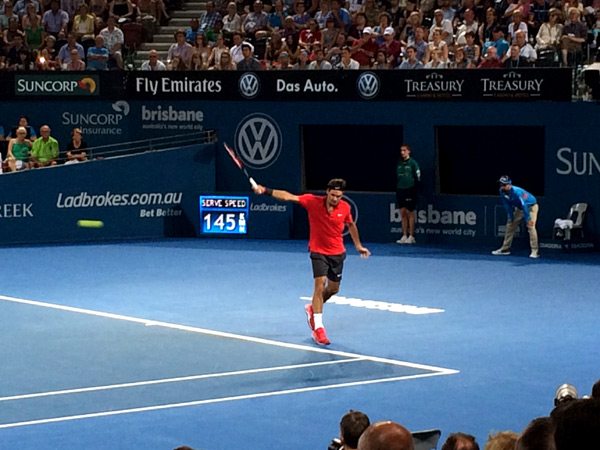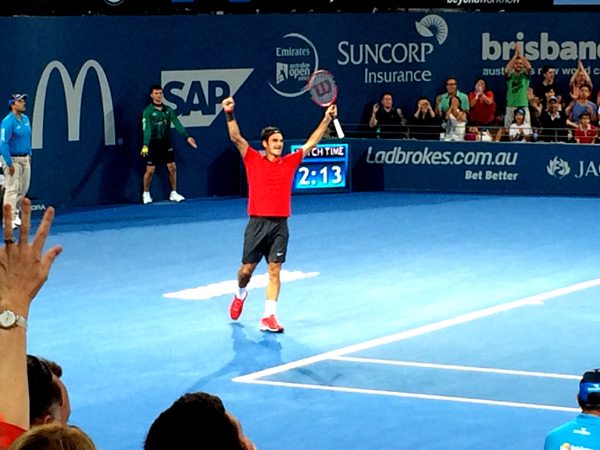
It’s a big number.
Roger reaches a massive milestone…
I was on Pat Rafter Arena last night to witness Roger win his 1000th match on tour – only the third player ever to do it. I want to share 10 things from the match with you.
1. It’s amazing how much Federer is loved by every crowd he ever plays in front of. I also watch him live at Indian Wells, Miami, Wimbledon, Cincinnati, New York and London last year, and at every venue, in every corner of the world, he is a total rock star. We are so lucky to have him as one of the guiding lights in our sport. He really does so much to keep interest levels up when there is much going in the world competing for our attention. When he walked out for the final, the Brisbane crowd went ape-droppings…
2. I sat on the side of the court, low, and really got to see the action Federer puts on the ball, and see how much he prowled the baseline – much more than Raonic was wanting to do. Federer puts a lot of work on his forehand, but the power takes over first and then the spin makes it dip late. So much whipping racket head speed – more noticeable when you watch him live.
3. Breaking early. There are basically four opponents in a tennis match:
- The opponent
- Yourself
- The scoreboard
- The crowd
Roger is a master at using the scoreboard in the match by breaking you early. He broke Milos at 1-1 in the first set, and then again in the very first game of the second set. It’s such a constant uphill battle from there. The best players in the world break early in sets. They have a much greater hunger for this tactic than the general crowd.
4. Milos loves his run-around forehand, and I love the tactic, but in general (especially early) he tried to hit it hard and flat like a hammer and missed too much. He would be far better off focusing on depth, spin and direction, than just a speed gun measurement. It did get a lot better in the third set.
5. Roger served wide a lot to stretch Milos initially to open up holes in the court. To the Canadian’s credit, he did scorch a couple of forehand return winners from wide in the deuce court. Frozen ropes.
6. I tweeted (@braingametennis) late in the first set that it felt like a Sampras match. There was a small period of tension when Federer broke early, and the rest of the games were very straight forward. Federer tried to remove the drama out of the match that could hurt him.
7. Raonic double faulted to lose serve in the opening game of the second set. That’s applied pressure from Federer stepping into a lot of second serves and even chipping and charging as well. It all adds up and explodes when the pressure meter is at it’s highest (break point).
8. Milos was down a set and a break and played very solid, smart tennis to get back into it. Sometimes you just have to hang around and wait for your opportunities. It was really good that he didn’t go away.
9. Most of the break point chances for both players came early in the 3rd set. This was the most important part of the match. Federer came up with big serves to targets when it mattered the most.
10. I also went to the post-match interview. Federer said he never put any value in winning other important matches tied to wins, such as 250 or 500, but he said this really, really meant a lot to him. He knows the history of the game, and now joins Connors and Lendl as the only ones with over 1000 wins.
It’s great to be courtside for matches like this because there is always so much to learn – lots of little things to pay attention to that really matter in a tennis match.
It’s off to Melbourne tomorrow, where I am speaking at the Australian Open Coaches Conference on Thursday. My presentation is called Pro Patterns and Percentages. Going to be a blast!
Cheers from the Gold Coast,
Craig



BUY BRAIN GAME STRATEGY
